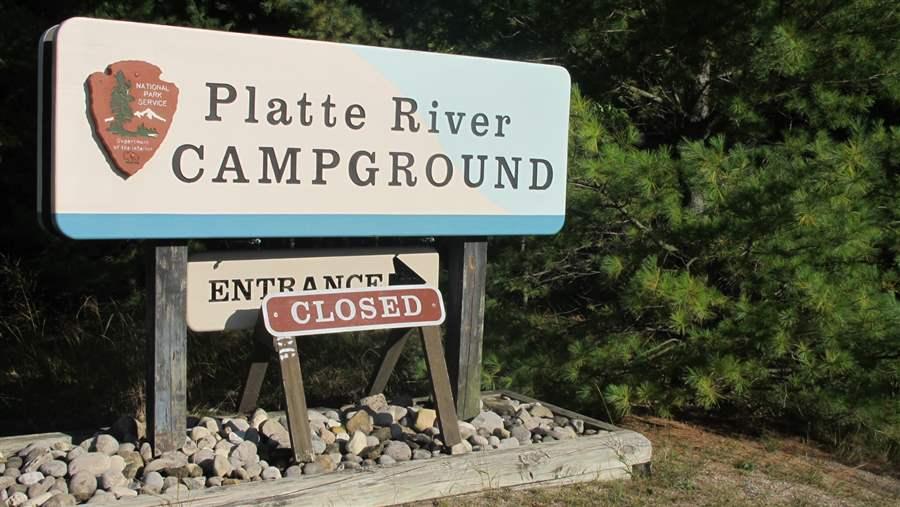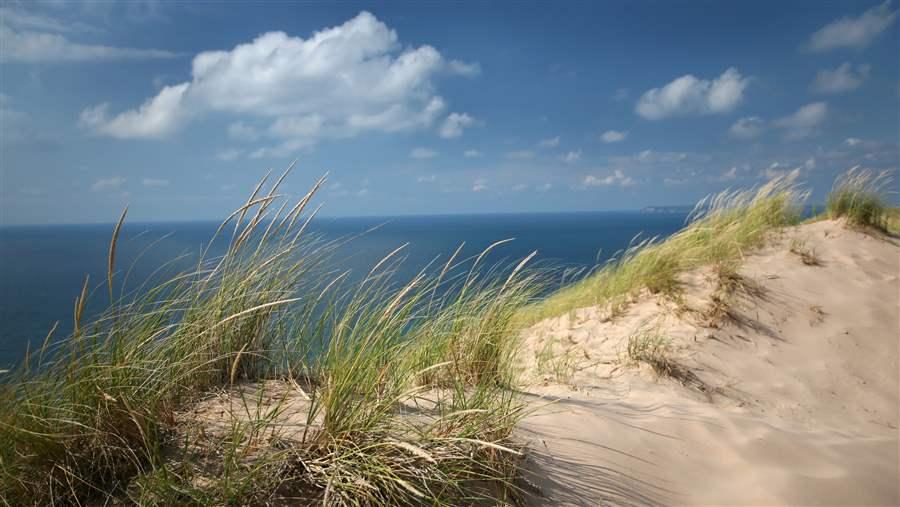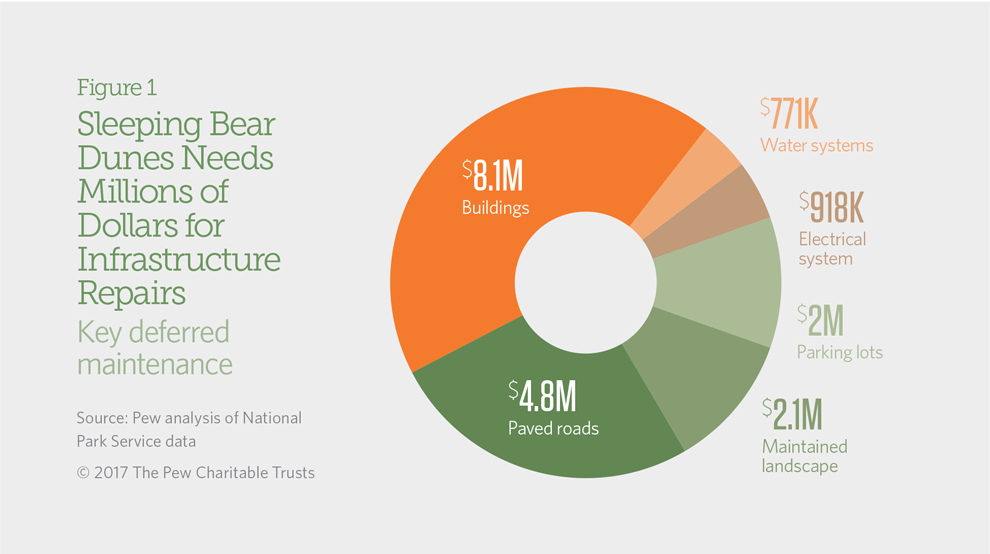Sleeping Bear Dunes National Lakeshore
Michigan
Pew created this case study using National Park Service deferred maintenance data issued in fiscal year 2015. The information listed here may no longer reflect the NPS site’s current condition or maintenance requirements. To find the most up-to-date information, please use the National Park Repair Needs tool.
This case study was updated on July 31, 2017, to reflect newly released 2016 data and to correct references to calendar and fiscal year.
Overview
In 2011, viewers of ABC’s “Good Morning America” chose Sleeping Bear Dunes National Lakeshore as the “Most Beautiful Place in America.”1 This spectacular 35-mile stretch along Lake Michigan’s eastern coast is best known for its pristine beaches and steep sand dunes and bluffs formed by retreating glaciers. It also has more than two dozen small lakes as well as marshes and tracts of hardwood forest.
The park has a rich history. It is named for the Chippewa legend of Sleeping Bear, the story of a mother bear and two cubs that go to the lake to escape a forest fire. All three attempt to swim to the other shore, but only the mother bear makes it. According to folklore, one of the large dunes depicts the mother bear looking out over the water for the cubs—now represented by islands that rose in their honor.2 The site later became a center for shipping, logging, and agriculture. Today, visitors can enjoy swimming at seven beaches, hiking through the maple and beech tree forests, and climbing the dunes. Unfortunately, the park has deferred maintenance needs of $20 million that may disrupt those visits.

Sleeping Bear Dunes National Lakeshore needs $20 million in repairs, including $2 million for campgrounds and picnic areas.
© John Flesher/The Associated Press
Maintenance challenges
When the park was established in 1970, the National Park Service became the owner of an old lighthouse, a former Coast Guard station, and a historic farm area. It is now responsible for maintaining 368 buildings, which account for nearly 40 percent of its repair backlog. NPS needs another $2 million to maintain campgrounds, picnic areas, and the landscape itself. Hiking along the dunes and up the steep bluffs is very popular, but heavy use has worn down many trails. Restoring them would cost nearly $600,000. The park also includes two uninhabited islands—North Manitou and South Manitou—that visitors can reach by ferry. The dock stations they launch from need more than $350,000 worth of repairs.
The 23 miles of roads inside the park have also deteriorated because of age and the toll of thousands of yearly visitors. Repairing them would cost $5 million. Most of that sum is needed to repave Pierce Stocking Scenic Drive, which winds to vantage points for Lake Michigan and Glen Lake.
Each year, guests from more than 20 states and six countries stay at my RV park, resort, and cottages to enjoy the fabled Sleeping Bear Dunes and its many trails and activities. Many community business owners rely on that tourism to make a living. That’s why it’s so important that we maintain the park’s roads, trails, campgrounds, and picnic areas so that visitors will continue to make the trip to this beautiful landscape.Gary Becker, president, Indigo Bluffs RV Park & Resort, Empire, Michigan
Recommendations
To address the deferred maintenance at Sleeping Bear Dunes and other NPS sites across the country, Congress should:
- Ensure that infrastructure initiatives include provisions to address park maintenance.
- Provide dedicated annual federal funding for national park repairs.
- Enact innovative policy reforms to ensure that deferred maintenance does not escalate.
- Provide more highway funding for NPS maintenance needs.
- Create more opportunities for public-private collaboration and donations to help restore park infrastructure.
Sleeping Bear Dunes National Lakeshore Facts
2016
|
Visitor spending |
$183.1 million |
|
Jobs created by visitor spending |
2,900 |
|
Economic output |
$231 million |
|
Labor income |
$71.4 million |
|
Visits |
1,683,553 |
|
Deferred maintenance (fiscal year 2015) |
$20.2 million |
Sources: National Park Service, “Annual Visitation Reports by Years: 2006 to 2016,” accessed Feb. 17, 2017, https://irma.nps.gov/Stats/SSRSReports/National Reports/Annual Visitation By Park (1979 - Last Calendar Year); National Park Service, “Visitor Spending Effects,” accessed Aug. 22, 2016, https://www.nps.gov/subjects/socialscience/vse.htm; National Park Service, “NPS Deferred Maintenance Reports,” accessed Aug. 19, 2016, https://www.nps.gov/subjects/plandesignconstruct/defermain.htm (Pew converted National Park Service data from this webpage and other NPS sources into a searchable database)
© 2017 The Pew Charitable Trusts
The Pew Charitable Trusts works alongside the National Parks Conservation Association, the National Trust for Historic Preservation, and other national and local groups to ensure that our national park resources are maintained and protected for future generations to enjoy.
Endnotes
- ABC News, “Most Beautiful Place in America Revealed!” accessed Dec. 12, 2016, http://abcnews.go.com/GMA/video/beautiful-place-america-revealed-sleeping-bear-dunes-michigan-14323307?tab=9482930§ion=1206852&playlist=14322444.
- National Park Service, “Sleeping Bear Dunes Stories,” accessed Dec. 12, 2016, https://www.nps.gov/slbe/learn/historyculture/stories.htm.













